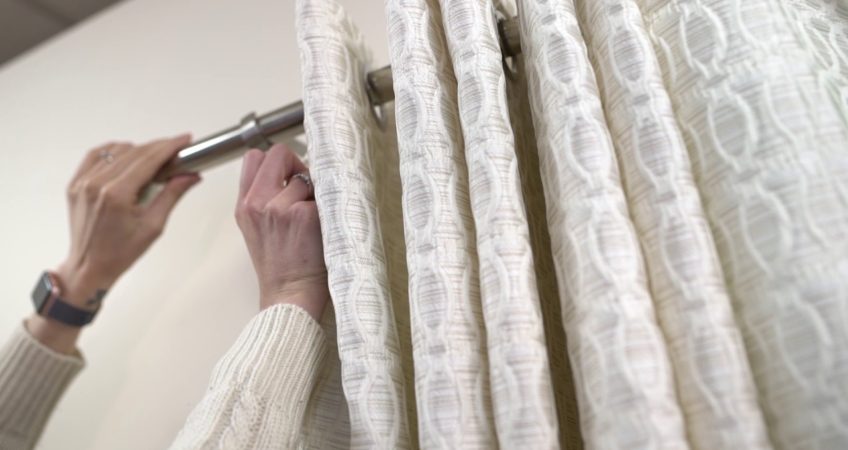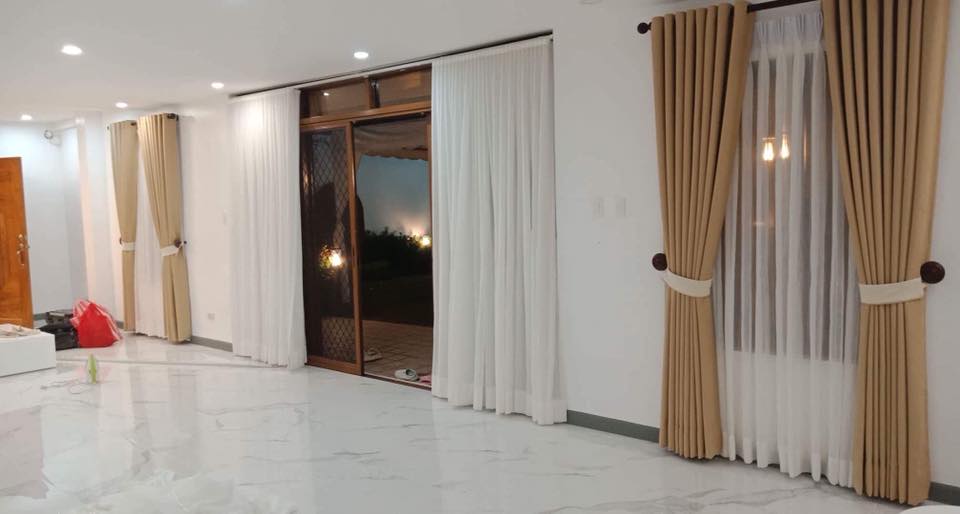Hang Curtains Highly:
There are varying opinions on where to hold curtains, but ultimately most interior designers and style Consultants recommend raising them above the framework. This draws the attention upward and prevents the window from appearing crowded. Hanging the curtains high makes the window and therefore the room looks taller. Even during a small room, if you mount your curtains on or near the ceiling, you’ll create the illusion of space.
CONSIDER THE STACK:
What is a stack? Our custom curtains at the curtain store have what’s referred to as “fullness” built into our panels. the development and pleating of our curtain make sure the panels have body and thickness once they are drawn or covering the window, meaning they don’t appear flat sort of a bedsheet. Fullness is one of the most important differences between custom and off-the-shelf curtains.
The stack is that the amount of space that the thickness of the drapery occupies once you push the panels off of the window. to form sure that the stack of the drapery doesn’t permanently crowd the pane, we propose adding a minimum of 12” on all sides to the width of your rod. This adds up to a complete of two feet wider than your window. Adding that much will allow the drapery to be pushed off of the glass. If you’re trying to find “Clearview”, or to possess none of the drapery impeding your pane, you’ll get to add more on all sides counting on the drapery material.
Ordering curtain rods that are too short is one among the highest mistakes I see in hanging drapes. Extending the rod, a foot on either side immediately makes the drapery appear more tailored and custom. an extended rod with drapes hung wide also helps make the window look bigger.
CHOOSE THE LENGTH: FLOAT VS. PUDDLE:
Now that we’ve touched on how high to boost your hardware and the way wide to form your drapery, the last element to think about is how your curtains meet the ground.
Float means your curtains hover slightly off the ground. this is often preferable if the drapery goes to maneuver frequently. the right float is somewhere between ½” to 1” off of the ground, but this will get tricky sometimes, especially with materials that “grow” like Wool and Linen. Ask your Design Consultant about material-specific concerns like this when calculating your float.
The break has the material kiss the ground, with roughly 1” to 2” of excess. this is often an honest option if the floors are uneven and you’re trying to disguise them.
A puddle means longer curtains, with 3” to 6” of additional fabric puddling on the ground. this is often a really elegant look and is additionally an excellent option for disguising uneven floors. However, the more extra fabric you’ve got on the rock bottom of a curtain, the more dust it’s going to collect, so I might only recommend breaks and puddles for stationary drapes.


